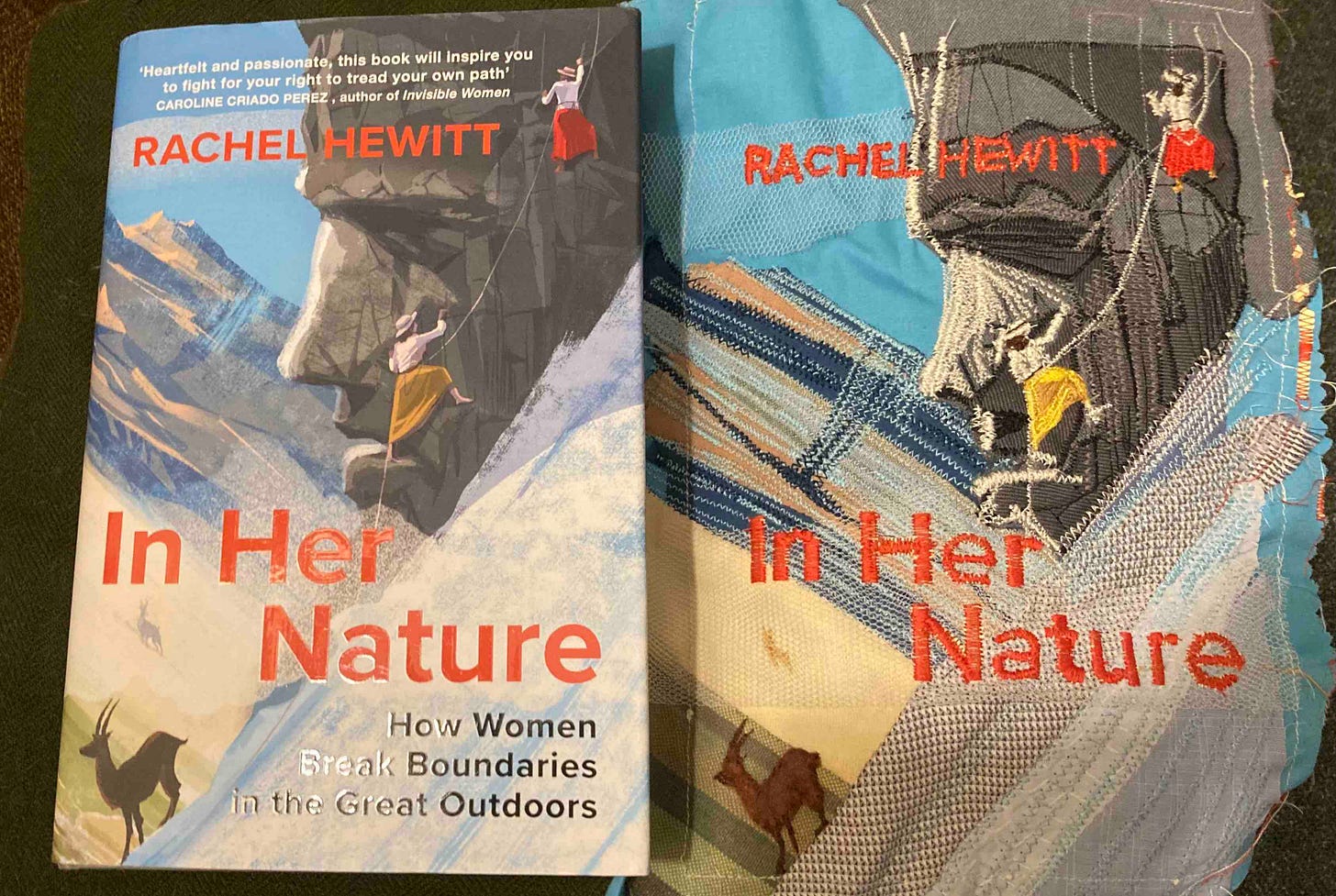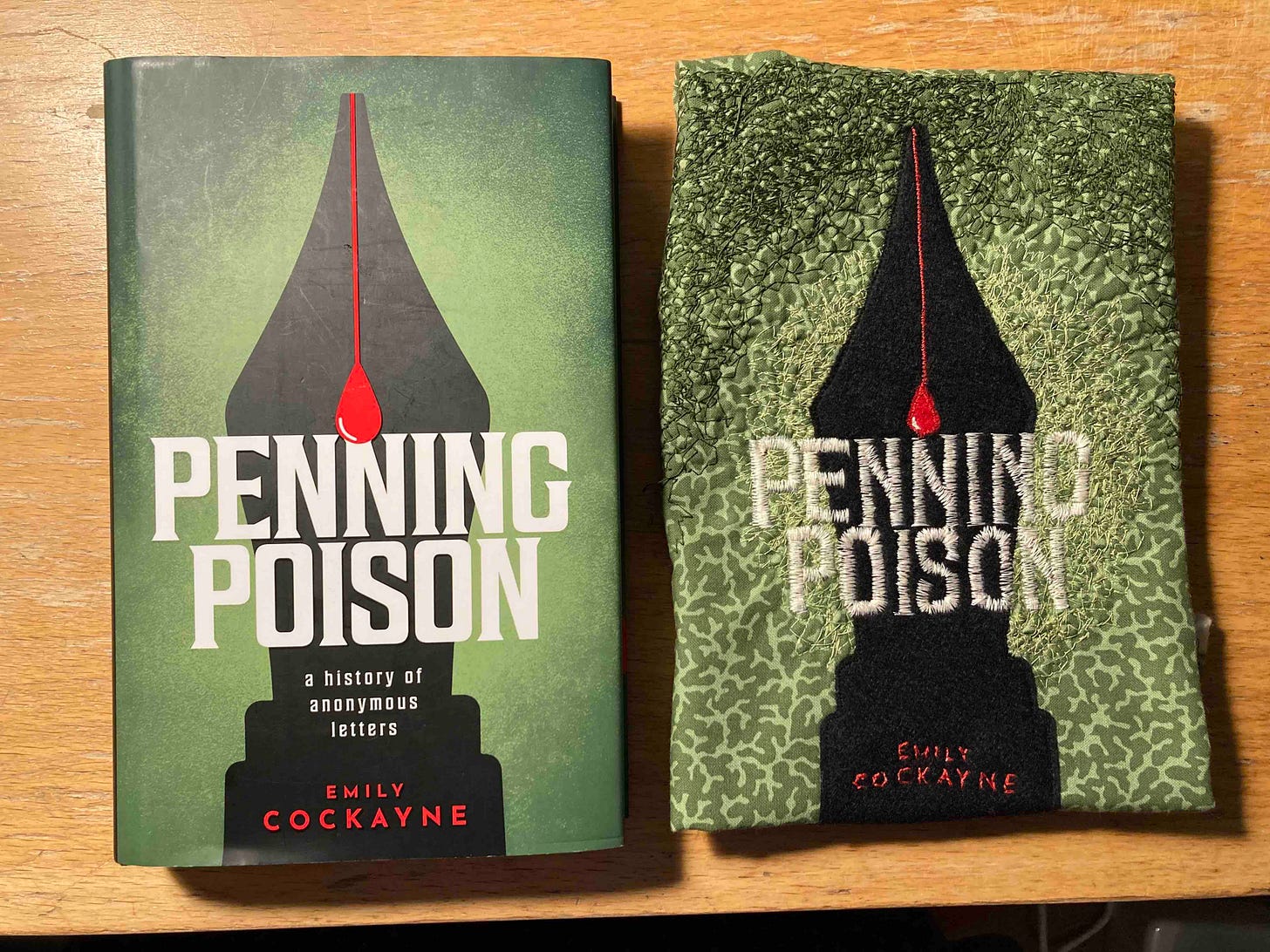Judging books by their quilted covers
An intriguing way to celebrate your What I Read This Year list
When most of us finish a book we’ve enjoyed we might make a note in our ‘books read’ journal or post about it on social media, maybe mention it to a friend. Dr Emily Cockayne, Associate Professor in Early Modern History, University of East Anglia, lavishes rather more love and attention on it than that. She quilts its cover.
“I started hand quilting and patchwork when I went to live with my grandma when I was I was eight years old,” says Dr Cockayne, a cultural historian who has written several fascinating books on topics as varied as the history of rubbish, neighbours, and urban filth (see her website www.rummage.work for more details). “Like many from her generation, Nan was obsessed with limiting waste and using everything up, and she had lots of scraps of fabric because she worked as a dressmaker.
“My first quilt was made of small hexagons, and it took me a dozen years to finish. Nan inspired the rule I follow with quilting, never buy fabric for quilting, only reuse materials. This has presented some challenges when trying to find the right colours to match book covers. My mother is a very accomplished machine embroiderer and I used to watch her create magnificent designs when I was a child, but I had not properly attempted machine embroidery applique until I started these book covers.”
This project started in 2023 when she was struggling to achieve a good work-life balance, and fretting that she was neither reading nor sewing as much as she wanted. So she took action.
“To encourage more reading and in the hope I would use of up some of my saved fabric supplies, I set myself the challenge of embroidering the book designs, with the motivating aim of eventually being able to wrap myself in pleasant bookish memories in the form of a double quilt. At the time I was reading Noreen Masud’s Flat Place, and that inspired me to try to extend the ways I think about books I read, making them more tactile experiences. And I also wanted to pay homage to Dr Masud and her incredible book.”
Since then, Dr Cockayne embroiders the covers of every book she has finished and enjoyed, mostly non-fiction titles, but with plans to up the fiction numbers. She has even reproduced the cover of her own latest book, Penning Poison: A history of anonymous letters. She is currently on her 12th (Ashley's Sack by Tiya Miles) and estimates she will need between 66 and 72 before she can stitch them all together, so it is a long term project.
Most of the book cover embroideries combine patchwork and embroidery by hand, with machined additions. If she feels the book demands some quiet reflection she hand-sews more of the cover. All of Rosalind Brown’s Practice was hand-sewn because the book itself made her think about sitting quietly, doing things while thinking about the processes of making things.
“My favourite covers are those for Gillian Rose’s Love’s Work and Marion Gibson’s The Witches of St. Osyth, the former for the joyous colourful exuberance, and the latter for the vibrancy of the pink juxtaposed against the dark greys. I fear that I might start to select books I will read in the future by the look of the cover, and that I am more inclined to read books now that have attractive or challenging cover designs,” she says. “I have also tried to continue to think about each book as I embroider it, a kind of extended process of reflection, sewing myself back into the stories.
“I do not think I will ever be very accomplished at embroidering words and names, and I never attempt the subtitles. Rachel Hewitt’s In Her Nature cover presented challenges, and in the process of thinking about those I found myself returning to passages in the book to digest them further in a more tactile experience of remembering.”








This is amazing! Love it.
Loving patchwork and embroidery myself, I find this project weirdly fun and fascinating. I think the finished quilt will be a work of art. What an original idea.